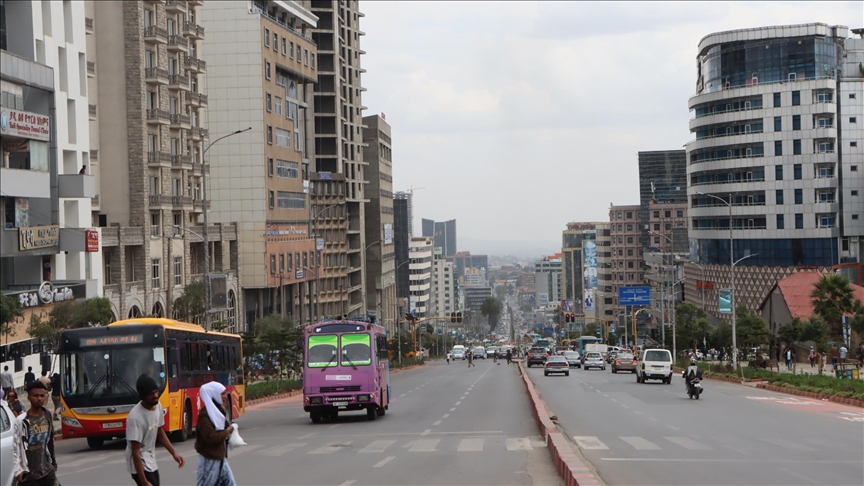Could joining Africa’s free trade deal boost Ethiopia’s fortunes?
Ethiopia has started to implement the African Continental Free Trade Area agreement this month, which some see as a ‘landmark moment’ for the country and continent

- ‘Implementing AfCFTA is not just about reducing tariffs. It means we need infrastructure, customs efficiency, logistics, and especially peace across borders. Without these, trade will remain a theory,’ says Adem
ADDIS ABABA, Ethiopia
In a move hailed as a potential economic turning point, Ethiopia has officially begun implementing the African Continental Free Trade Area (AfCFTA) agreement, one of the most ambitious integration efforts in Africa’s modern history.
On July 1, the Horn of Africa nation entered the operational phase of the free trade deal, marking a shift from political commitment to execution and joining a growing bloc of African countries working to bring the vision of a single continental market to life.
Often described as the world’s largest free trade area by number of participating countries, AfCFTA aims to eliminate trade barriers across 54 African Union (AU) member states.
Ethiopia’s entry into the implementation phase is seen as both a bold economic move and a strategic political gesture, particularly as the country hosts the AU’s headquarters.
“This is a landmark moment for Ethiopia,” said Abdulqadir Adem, a senior economist and national political party leader who specializes in regional integration.
But Adem warned that the success of the agreement hinges not only on trade policy but also on peace, political stability, and mutual trust among African nations.
Step toward a continental vision
First signed in Rwanda’s capital Kigali in 2018 and officially launched in 2021, the AfCFTA aspires to create a single African market for goods and services, streamline supply chains, attract investment, and promote industrialization and competitiveness across the continent.
With the exception of Eritrea, all AU member states are signatories to the agreement, covering a population of around 1.3 billion and a combined GDP of more than $3.4 trillion.
The pact could transform intra-African trade – which currently accounts for just 14.4% of total trade – by increasing it more than 50% by 2030, according to the AU and the UN Economic Commission for Africa. In Asia, regional trade accounts for 59%, while in Europe the figure is even higher at 69%.
For Ethiopia, a country of more than 120 million people, joining the operational phase is both an economic and political decision.
Noting Ethiopia’s symbolic role as host of the AU headquarters, Adem said the country is uniquely positioned to lead and accelerate the trade deal’s implementation.
“The bottom line is political will,” Adem said. “We’ve had many trade initiatives on this continent, but most have failed to yield meaningful impact because there was no peace or security to back them up. AfCFTA cannot thrive in an unstable environment.”
The agreement goes beyond tariff cuts, as its scope also includes free movement of people and capital, as well as unified competition policies and investment protections.
Turning policy into practice
Although Ethiopia ratified the agreement in 2019, implementation was delayed by internal and regional challenges, including conflict and macroeconomic instability. But now, with relative calm returning and trade institutions being restructured, the agreement will be put into practice.
“The implementation will open a significant opportunity for our economy and industrial competitiveness,” Trade and Regional Integration Minister Kassahun Gofe told the state-run Ethiopian News Agency. He added that Ethiopia will initially focus on products where it has a comparative advantage, such as coffee, leather goods, and textiles.
Still, experts like Adem point to major challenges ahead.
“We have to understand that implementing AfCFTA is not just about reducing tariffs. It means we need infrastructure, customs efficiency, logistics, and especially peace across borders. Without these, trade will remain a theory,” he said.
His warnings point to structural barriers such as limited transport and logistics capacity, misaligned customs protocols, and political instability as key hurdles that could undermine effective implementation.
“When you implement a free trade area, it must be as a package,” he said. “The free movement of goods must be matched by policies on capital, people and investment.”
‘In the long term, everybody benefits’
This package of reforms is central to Agenda 2063, the AU’s strategic blueprint for inclusive growth and transforming Africa into a global power. Its long-term goals include an African Monetary Union with a single currency, a continental customs union, and a pan-African parliament.
To accommodate economic disparities, the AfCFTA gives least developed countries like Ethiopia up to 10 years to eliminate tariffs on 90% of goods, plus five additional years for sensitive products. A further 7% of goods can be excluded from liberalization altogether.
Adem warned that some short-term economic discomfort is inevitable, but worth it.
“The success of this agreement depends on meticulous follow-up from leaders and a willingness to implement it, even if it goes against a country’s short-term gains, like tariff revenues,” he said. “But in the long term, everybody benefits.”
Anadolu Agency website contains only a portion of the news stories offered to subscribers in the AA News Broadcasting System (HAS), and in summarized form. Please contact us for subscription options.







